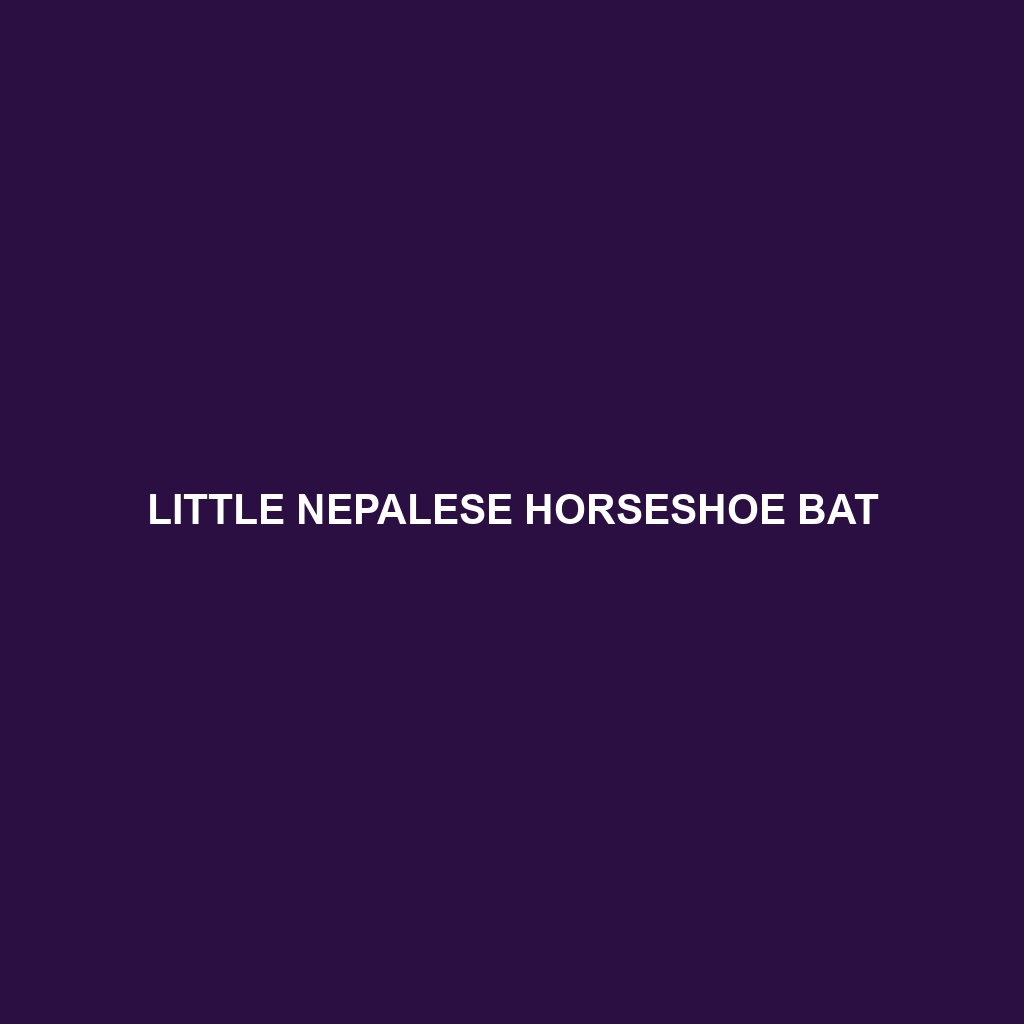Lesser Brown Horseshoe Bat
Common Name: Lesser Brown Horseshoe Bat
Scientific Name: Rhinolophus mehelyi
Habitat
The Lesser Brown Horseshoe Bat is primarily found in parts of Europe and Asia. This species typically inhabits temperate forests, woodlands, and agricultural areas, often roosting in caves, abandoned buildings, and tree hollows. Their preference for moist environments makes them more likely to be found near rivers and streams, which are crucial for their survival.
Physical Characteristics
The Lesser Brown Horseshoe Bat is characterized by its small size, with adults measuring approximately 4 to 6 centimeters in body length and a wingspan of around 25 to 30 centimeters. Its fur is usually a rich brown color, featuring a distinctive horseshoe-shaped nose-leaf that aids in echolocation. This nose structure is one of the bat’s most notable features, as it enhances its ability to locate prey in the dark.
Behavior
This species exhibits nocturnal behavior, emerging at dusk to hunt for insects. They are known for their agile flying skills and often forage in wooded areas and along the edges of fields. Lesser Brown Horseshoe Bats typically engage in social behavior, roosting in small groups during the day. Migratory patterns also vary depending on environmental conditions and seasons, making them a subject of interest for researchers.
Diet
The diet of the Lesser Brown Horseshoe Bat primarily consists of various insects, including moths, beetles, and flies. They utilize their sophisticated echolocation abilities to detect and capture prey on the wing. This bat plays a crucial role in controlling insect populations, thus maintaining ecological balance in its habitat.
Reproduction
Breeding for the Lesser Brown Horseshoe Bat typically occurs in late spring, with a gestation period of around 50 to 60 days. Females give birth to one or two pups in early summer, which are nursed until they can forage independently. Parental care is essential, as pups rely on their mothers for warmth and food during their early development stages.
Conservation Status
The Lesser Brown Horseshoe Bat is currently listed as “Vulnerable” on the IUCN Red List. Threats to its survival include habitat destruction, human interference, and declines in insect populations. Conservation efforts are focused on habitat preservation and the protection of roosting sites.
Interesting Facts
One fascinating fact about the Lesser Brown Horseshoe Bat is its ability to echolocate with remarkable precision, allowing it to detect objects as small as a pin from several meters away. Additionally, this bat species can live up to 20 years in the wild, making it one of the longer-lived bat species.
Role in Ecosystem
The Lesser Brown Horseshoe Bat plays a vital role in its ecosystem as a pollinator and a pest controller. By consuming large quantities of insects, it helps regulate pest populations, benefiting agriculture and natural food webs. Moreover, their role as prey for larger predators highlights their place in the ecological hierarchy.
